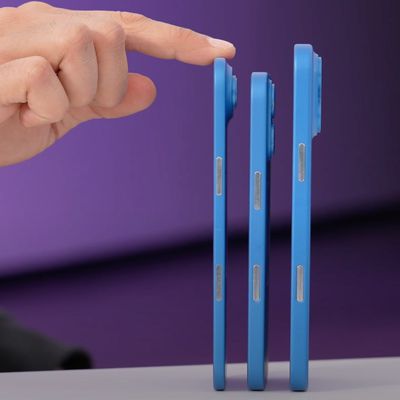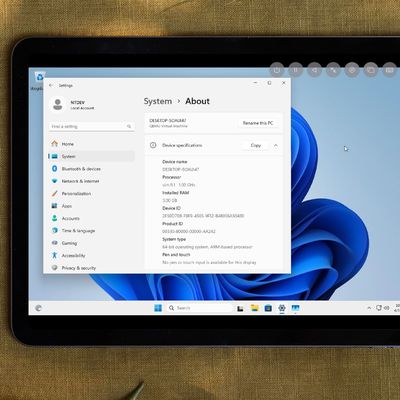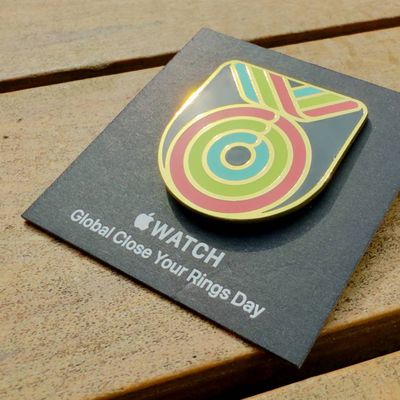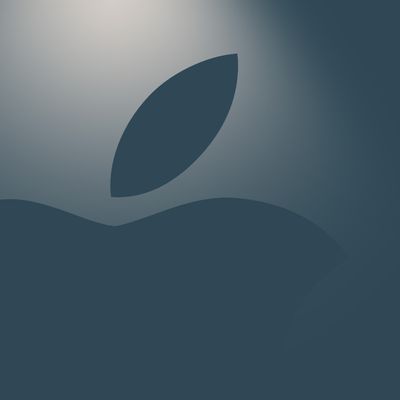Mac Update Cycle Faces Uncertainty as Intel Abandons Tick-Tock Strategy
In its latest 10-K annual report (PDF) filed last month, Intel confirmed the end of its long-heralded "tick-tock" strategy of delivering new microprocessors to the market. Intel originally introduced the product cadence to the world in 2006 with the launch of the "Core" microarchitecture, alternating "ticks" of shrinking chip fabrication processes with "tocks" of new architectures.
Over the past ten years, Intel has successively delivered new processor families based on this tick-tock cycle on a nearly annual cycle from its 65 nm manufacturing node all the way up until recently. The tick-tock release cycle allowed Intel to reestablish dominance in both the consumer and enterprise CPU markets and had given OEMs such as Apple a regular update cycle to rely on for annual product updates. But with chip updates stretching about beyond a yearly cycle in recent generations, Apple's product launch cycles have started to be affected.
In the face of the difficulties in maintaining the tick-tock cadence, Intel has announced that the launch of Kaby Lake this year as the third member of the 14-nm family following Broadwell and Skylake will mark the official end of the tick-tock strategy. Instead, Intel will move to a new "Process-Architecture-Optimization" model for the current 14 nm node and the 10 nm node.

As part of our R&D efforts, we plan to introduce a new Intel Core microarchitecture for desktops, notebooks (including Ultrabook devices and 2 in 1 systems), and Intel Xeon processors on a regular cadence. We expect to lengthen the amount of time we will utilize our 14nm and our next-generation 10nm process technologies, further optimizing our products and process technologies while meeting the yearly market cadence for product introductions.
This development is not unexpected, as semiconductor foundries have had increasingly tough times creating smaller process nodes as fabrication of smaller transistors has become increasingly expensive and complex. Transistors are rapidly approaching the physical limits of traditional semiconductor geometries, and the famous Moore's Law regarding transistor density has been formally acknowledged to no longer be valid.
Intel has no doubt moved to this new release model in an attempt to get back to a regular product and platform cadence as it struggles with the technological challenges of bringing new fabrication nodes to volume production. As noted in our Mac Buyer's Guide, many of Apple's Macs have gone without update for the longest time since we began tracking them, though Apple has yet to update to the available Skylake microarchitecture for its Mac line. Some product uncertainty is due to continue as the launch of Intel's Kaby Lake microarchitecture has been recently delayed to the second half of 2016 after Skylake suffered similar setbacks last year.
Popular Stories
While the iPhone 17 Pro and iPhone 17 Pro Max are not expected to launch until September, there are already plenty of rumors about the devices.
Below, we recap key changes rumored for the iPhone 17 Pro models as of April 2025:
Aluminum frame: iPhone 17 Pro models are rumored to have an aluminum frame, whereas the iPhone 15 Pro and iPhone 16 Pro models have a titanium frame, and the iPhone ...
If you missed the video showing dummy models of Apple's all-new super thin iPhone 17 Air that's expected later this year, Sonny Dickson this morning shared some further images of the device in close alignment with the other dummy models in the iPhone 17 lineup, indicating just how thin it is likely to be in comparison.
The iPhone 17 Air is expected to be around 5.5mm thick – with a thicker ...
Despite being more than two years old, Apple's AirPods Pro 2 still dominate the premium wireless‑earbud space, thanks to a potent mix of top‑tier audio, class‑leading noise cancellation, and Apple's habit of delivering major new features through software updates. With AirPods Pro 3 widely expected to arrive in 2025, prospective buyers now face a familiar dilemma: snap up the proven...
Apple plans to release an all-new super thin iPhone this year, debuting it alongside the iPhone 17, iPhone 17 Pro, and iPhone 17 Pro Max. We've seen pictures of dummy models, cases, and renders with the design, but Lewis Hilsenteger of Unbox Therapy today showed off newer dummy models that give us a better idea of just how thin the "iPhone 17 Air" will be.
The iPhone 17 Air is expected to be ...
While the so-called "iPhone 17 Air" is not expected to launch until September, there are already plenty of rumors about the ultra-thin device.
Overall, the iPhone 17 Air sounds like a mixed bag. While the device is expected to have an impressively thin and light design, rumors indicate it will have some compromises compared to iPhone 17 Pro models, including only a single rear camera, a...
A developer has demonstrated Windows 11 ARM running on an M2 iPad Air using emulation, which has become much easier since the EU's Digital Markets Act (DMA) regulations came into effect.
As spotted by Windows Latest, NTDev shared an instance of the emulation on social media and posted a video on YouTube (embedded below) demonstrating it in action. The achievement relies on new EU regulatory...
Starting today, April 24, Apple Stores around the world are giving away a special pin for free to customers who request one, while supplies last.
Photo Credit: Filip Chudzinski
The enamel pin's design is inspired by the Global Close Your Rings Day award in the Activity app, which Apple Watch users can receive by closing all three Activity rings today. The limited-edition pin is the physical...
Apple's $570 million fine from the EU has triggered a sharp rebuke from the White House, which called the fine a form of economic extortion, Reuters reports.
The fine was announced on Wednesday by the European Commission, following a formal investigation into Apple's compliance with the bloc's Digital Markets Act (DMA), a landmark piece of legislation aimed at curbing the market dominance of ...
When an iPad running iPadOS 19 is connected to a Magic Keyboard, a macOS-like menu bar will appear on the screen, according to the leaker Majin Bu.
This change would further blur the lines between the iPad and the Mac. Bloomberg's Mark Gurman previously claimed that iPadOS 19 will be "more like macOS," with unspecified improvements to productivity, multitasking, and app window management,...
























